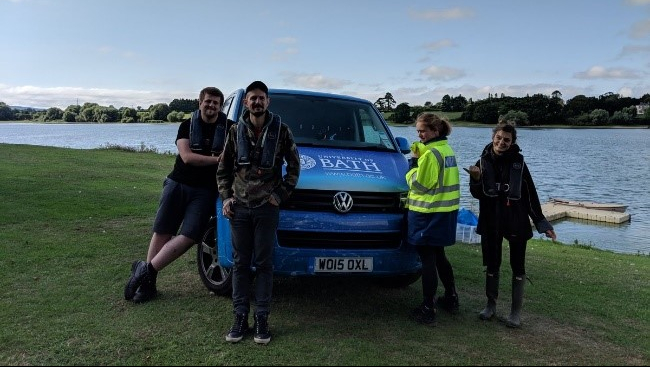Drinking water reservoir resiliency in a changing climate
This project will look to create a 3D physical model of the Welsh Water reservoir Llandegfedd to improve processes and determine impacts of interventions.

During the summer reservoirs can be susceptible to stratification. Water quality issues, such as discolouration, taste and odour problems, can arise from a number of process from summer stratification. Due to this it can be important to monitor and study these aspects of the reservoir. Furthermore installation of mechanical mixer or bubble plumes to destratify reservoirs can be used to reduce these issues. However there is a fear that climate change could further exacerbate such issues and that modern practice might not be able to ensure water quality moving forward. This project will look to create a 3D physical model of the reservoir, using existing reservoir model to characterise hydrodynamics, to support this endeavour with the following aims:
(1) The project will seek to understand the flow dynamics of a mechanical mixer within a reservoir. This includes understand the extent of where the mixer has an effect on the reservoir. This will also include studying whether the mechanical mixer maintain homogeneity of the water column throughout a summer and there for maintain a level of water quality.
(2) The project will simulate a mechanical mixer and its effects within a 3D hydrodynamic model, using AEM3D. The established model run should be able to capture the density arrangement and other factors within the study sites. This is important as with a functioning model the project can then explore further aims.
(3) The project will investigate the long-term viability of these mixers in a changing climate to keep water column homogeneity. This aim will explore multiple climate scenarios to explore this problem in different futures. This will allow for future planning of reservoir management.
Science
AEM3D is a coupled 3D model of hydrodynamics and ecology within a number of hydro- environments. This model has been employed in a number of reservoir studies. This model works by coupling ELCOM and CAEDYM routines in order to achieve its aims. The solver for the hydrodynamics, ELCOM, uses unsteady, viscous Naiver-Stokes equations and can calculate a huge number of processes. While the biogeochemical element, CAEDYM, includes an array of algorithms to incorporate various processes like production and cycling. AEM3D has a module that can simulate surface mixers meaning it is capable of dealing with the ResMix placed in Llandegfedd. Within the department and monitoring by water companies there is a large supply of data that can be used for verification and calibration of the model. This data should cover both before and after the ResMix was operational, this means that data will be available for both states the model will be run with. The reservoir like Llandegfedd is visited by both Welsh Water and other academics for collection of data, which I will also contribute towards. This means up-to-date data will be captured. This data collection will include in-situ measurements, dissolved oxygen and temperature profiles. This will offer numerous variables from which the model can be calibrated against. The project will base the climate change scenarios will be based on the ones presented by the IPCC based on greenhouse gas emission and economic growth among other factors.
Impact
Once reservoir data will be used to calibrate the model until it reflects reality to an acceptable degree. The model can then be forced with different climate scenarios which would affect rainfall, summer temperature among other factors. The results from this model can then be used to diagnose how this changed forcing will affect the physics of the reservoir.

